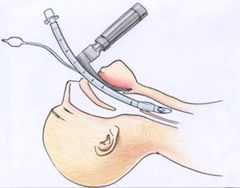Most Recent
Episode 10 Part 1: Trauma Pearls and Pitfalls
In this episode on Trauma Pearls and Pitfalls, Dr. Dave MacKinnon and Dr. Mike Brzozowski discuss the latest in trauma controversies. In Part 1 they give us some key pearls and pitfalls on traumaairway management, the value of the C-spine collar, how to clear the C-spine, vascular access options in trauma, 'Damage Control Rescuscitation', the best resuscitation fluids to use including hypertonic saline, hemostatic drugs such as Tranexamic Acid in trauma, the vulue, or lack thereof, of Recombinant Factor 7a in trauma, and the use of Prothrombin Complex Concentrates in trauma.
Episode 9: Nontraumatic Eye Emergencies
Nontraumatic Eye Emergencies are seldom very satisfying for the emergency physician to manage. However, with systematic approach and timely management they can save a patient's vision. Dr. George Porfiris and Dr. Simon Kingsley discuss four non-traumatic eye emergency presentations. The painful red eye, the painless red eye, acute painful loss of vision and acute painless loss of vision. Several cases are discussed in which an accurate diagnosis and timely ED management are of critical importance in order to prevent permanent vision loss and significant morbidity. A systematic approach to the eye examination is described with particular attention to important maneuvers such as the swinging flashlight test. The utility of ED ultrasound of the eye is debated, and a discussion around systemic diseases that cause eye problems provides fodder for many clinical pearls.
Episode 8: Emergency Airway Controversies
There are so many emergency airway controversies in emergency medicine! Dr. Jonathan Sherbino, Dr. Andrew Healy and Dr. Mark Mensour debate dozens of these controversies surrounding emergency airway management. A case of a patient presenting with decreased level of awareness provides the basis for a review of the importance, indications for, and best technique of bag-valve-mask (BVM) ventilation, as well as a discussion of how best to oxygenate patients. This is followed by a discussion of what factors to consider in deciding when to intubate and some of the myths of when to intubate. The next case, of a patient with severe head injury who presents with a seizure, is the fodder for a detailed discussion of Rapid Sequence Intubation (RSI). Tips on preparation, pre-oxygenation and positioning are discussed, and some great debates over pre-treatment medications, induction agents and paralytic agents ensues. The new concept of Delayed Sequence Intubation is explained and critiqued. They review how to identify a difficult airway, how best to confirm tube placement and how to avoid post-intubation hypotension. In the last case of a morbidly obese asthmatic they debate the merits of awake intubation vs RSI vs sedation alone in a difficult airway situation and explain the best strategies of ventilation to avoid the dreaded bradysystlolic arrest in the pre-code asthmatic. Finally, some key strategies to help manage the morbidly obese patient's airway effectively are reviewed.
Episode 7: Medical and Surgical Emergencies in Pregnancy
The whole playing field changes with pregnant patients in the emergency department. When you're faced with one of the Medical and Surgical Emergencies in Pregnancy that we'll cover in this episode, there are added challenges and considerations. Dr. Shirley Lee and Dr. Dominick Shelton discuss a challenging case of a pregnant patient presenting to the emergency department with shortness of breath and chest pain. They review those diagnoses that the pregnant patient is at risk for and discuss the challenges of lab test interpretation and imaging algorithms in the pregnant patient. Next, they walk us through the management of cardiac arrest in the pregnant patient. In another case of a pregnant patient who presents with abdominal pain and fever, they discuss strategies to minimize delays in diagnosis to prevent serious morbidity and mortality. The pros and cons of abdominal ultrasound, CT and MRI are reviewed as well as the management of appendicitis, pyelonephritis and septic abortion in pregnant patients.
Episode 6: Transient Ischemic Attack
Transient Ischemic Attack (TIA) can be difficult to diagnose. It's unclear who to work up. It's challenging if the patient is already taking blood thinners. Dr. Walter Himmel and Dr. Daniel Selchen discuss the key historical and physical examination maneuvers to determine whether patients with neurologic complaints have had a TIA or whether they have had a TIA mimic. They review the 3 best risk stratification rules including the ABCD2 Score to help us determine who needs to be admitted and who needs timely investigations to reduce vascular morbidity and mortality. The reasoning behind which patients require urgent carotid imaging, echocardiograms and advanced imaging such as CT Angiogram is explained, and the best medication choices are reviewed, as well as the indications for Clopidogrel, Aggrenox, Warfarin, Heparin and carotid endarterectomy in the managment of Transient Ischemic Attack. In the second part of the episode, a simple and practical approach to the patient with dizziness is presented, and a discussion on which patients with dizziness need urgent work-up and treatment for vertebrobasilar TIA.
Episode 5: Renal Colic, Toxicology Update & Body Packers
This Episode is a potpourri of topics - Renal Colic, Toxicology Update & Body Packers. Dr. Lisa Thurgur and Dr. Paul Rosenberg discuss the common presentation of Renal Colic, with perspectives on the mixed evidence for medical expulsive therapy, the overuse of imaging studies and when we need to worry about the patient who presents with excruciating flank pain. Next, Dr. Thurgur gives us an update on the three most important recent advances in Toxicology for emergency physicians - Lipid Emulsion Therapy, Hydroxocobalamin and Insulin therapy for Calcium Channel Blocker toxicity. Finally, Dr. Rosenberg and Dr. Thurgur discuss the 'ins and outs' of body packers. They review the management of both asymptomatic and symptomatic body backers, highlighting common errors and key therapeutic moves to prevent death.





